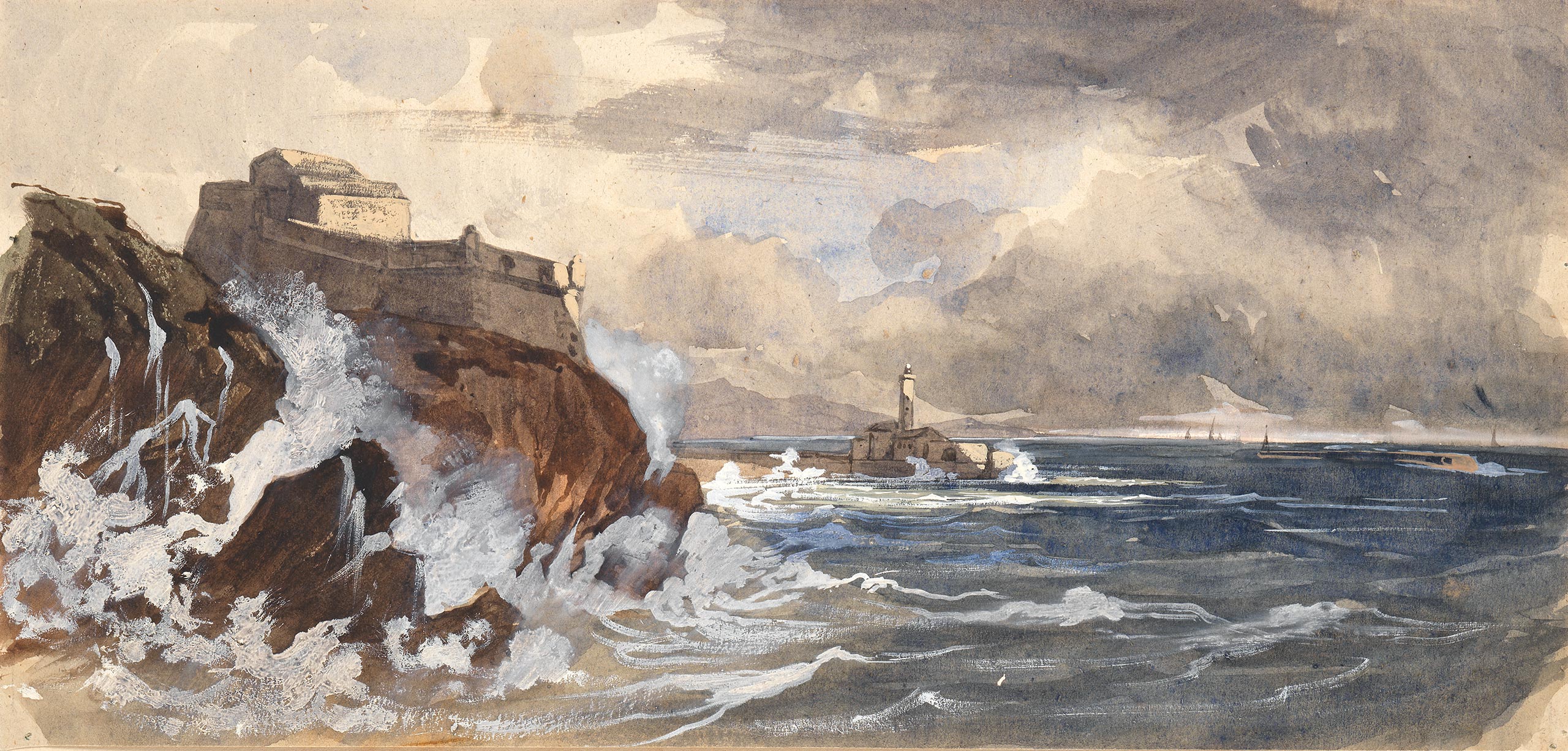
Lalaisse
François-Hippolyte
Nancy 1810 — Paris 1884
View of the Sea
Watercolour and gouache with white gouache highlights.
159 x 322 mm (6 1/8 x 11 7/16 in.)
Provenance
An album containing several works by Lalaisse, some signed, others unsigned, formerly in a private collection.
A student of Nicolas-Toussaint Charlet (1792-1845), and his collaborator as professor of drawing at the École Polytechnique between 1839 and 1877, François Hippolyte Lalaisse exhibited several paintings at the Salon from 1845 to 1874. He devoted much of his time to drawing and engraving illustrations, notably of military costumes, as seen in watercolours belonging to the Musée de l’Armée. Like his teacher Charlet, Lalaisse was more interested in his contemporaries and their customs than those of antiquity, but paradoxically, he also belonged to a movement that rejected modernity. His trip to Brittany and the costume studies he returned with are part of this counter-movement comprising an interest in the contemporary man, but also the traditional man and man of the land. The Musée des Civilisations de l’Europe et de la Méditerranée in Marseille (MUCEM) owns a fine album of watercolours produced during his stay in Brittany, which the artist subsequently used to produce a series of lithographs entitled La Galerie Armoricaine: costumes et vues pittoresques de la Bretagne (The Amorican Gallery: Costumes and Picturesque Views of Brittany) published in Nantes by Charpentier père et fils in 1848. Lalaisse specialized in traditional costumes, which he illustrated in works such as this or La Normandie Illustrée (Paris, Charpentier, 1852), and in suites of military costumes, for example. This work illustrating local costumes and lifestyles proved an invaluable source for researchers into Celtic culture that was very fashionable in the 19th century. Similarly, in the 1850s, in his search for current events rather than antiquity, or maybe, like Delacroix, a “living antiquity”, the artist travelled to North Africa, in particular Algeria and Turkey, and brought back numerous studies and watercolours. Like his friend Géricault, Lalaisse was also a tireless draughtsman and horse painter.
This seascape study belonged to an album of drawings containing an ensemble of Lalaisse’s works. Landscape drawing is a little-known aspect of his graphic activity, but one that he clearly practiced since he employs it with talent in his painting, even if only for background work. This work bears witness to an extraordinary grasp of nature and a fully romantic style. It displays an intense feeling for the elements: the rendering of the movement of the waves and spray of foam breaking on the rocks through the controlled effects of white gouache and the distribution of grey and blue watercolour in the sky to draw clouds that race and intertwine, make for a lively, sonorous little landscape that captivates the viewer. Equally remarkable is the rendering of the phenomenon of condensation in a white mist that envelops the horizon, using a mixture of bare paper and blended gouache, perhaps applied with a sponge. His extraordinary talent can also be observed in the beautiful View of a Forest that we further present.

